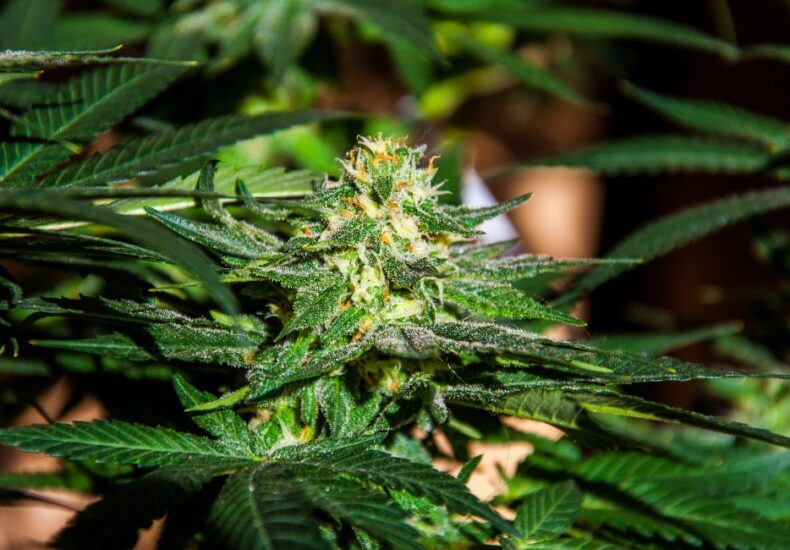
Mastering Cannabis Cultivation
The art of growing cannabis has evolved significantly over the years, transforming from a clandestine activity into a sophisticated science. With the legalization of cannabis in various regions, enthusiasts and entrepreneurs alike are keen to explore the intricacies of cultivation. This article delves into the key aspects of mastering cannabis cultivation, offering insights and strategies for both novice and experienced growers.
Understanding the Basics of Cannabis Cultivation
Before embarking on the journey of cannabis cultivation, it’s imperative to grasp the fundamental principles. Cannabis plants, like any other, require specific conditions to thrive. These include light, water, nutrients, and a suitable growing environment.
- Light: Cannabis plants need ample light to grow. Indoor growers often use LED or HID lights to mimic the sun’s rays.
- Water: Proper hydration is crucial. Overwatering or underwatering can lead to root rot or nutrient deficiencies.
- Nutrients: Cannabis requires a balanced mix of nitrogen, phosphorus, and potassium, along with trace minerals.
- Environment: Temperature and humidity levels must be monitored to prevent mold and pests.
Choosing the Right Strain
The choice of strain can significantly impact the cultivation process. Different strains have varying growth patterns, THC levels, and flavor profiles. Some popular strains for beginners include:
- Blue Dream: Known for its balanced effects and ease of growth.
- White Widow: Offers a high yield and is resistant to pests.
- Green Crack: Fast-growing with a high THC content.
Researching and selecting a strain that aligns with your goals and growing conditions is a critical step in the cultivation process.
Indoor vs. Outdoor Cultivation
Deciding between indoor and outdoor cultivation depends on various factors, including climate, space, and resources. Each method has its advantages and challenges.
Indoor Cultivation
Indoor growing offers control over environmental conditions, allowing for year-round cultivation. Growers can manipulate light cycles, temperature, and humidity to optimize plant growth. However, indoor setups can be costly due to equipment and energy consumption.
Outdoor Cultivation
Outdoor growing harnesses natural sunlight and can be more cost-effective. It requires less equipment and can produce larger yields. The downside is the dependency on weather conditions and the risk of pests and diseases.
Advanced Techniques for Enhanced Yields
For those looking to maximize their harvest, several advanced techniques can be employed:
- Training Methods: Techniques like topping, fimming, and low-stress training (LST) can increase yields by promoting more bud sites.
- Hydroponics: Growing plants in a nutrient-rich water solution can accelerate growth and improve yields.
- SCROG (Screen of Green): This method involves using a screen to spread out the plant canopy, ensuring even light distribution.
Case Studies: Success Stories in Cannabis Cultivation
Examining successful cultivation operations can provide valuable insights. One notable example is the story of a small-scale grower in California who transitioned from traditional soil growing to a hydroponic system. This change resulted in a 30% increase in yield and improved plant health.
Another case involves a Canadian company that implemented advanced climate control systems in their indoor facility. This allowed them to produce consistent, high-quality cannabis year-round, leading to increased market demand and profitability.
Common Challenges and Solutions
Cannabis cultivation is not without its challenges. Common issues include pest infestations, nutrient deficiencies, and mold growth. Addressing these problems requires vigilance and proactive measures.
- Pests: Regular inspections and the use of natural predators or organic pesticides can help manage pest populations.
- Nutrient Deficiencies: Conducting soil tests and adjusting nutrient levels can prevent deficiencies.
- Mold: Maintaining proper airflow and humidity levels can reduce the risk of mold.
The Future of Cannabis Cultivation
The cannabis industry continues to evolve, with advancements in technology and cultivation techniques. Innovations such as automated growing systems and genetic engineering hold the potential to revolutionize the way cannabis is grown. As the industry expands, growers must stay informed and adaptable to remain competitive.
Conclusion
Mastering cannabis cultivation requires a blend of knowledge, skill, and adaptability. By understanding the basics, choosing the right strain, and employing advanced techniques, growers can optimize their yields and produce high-quality cannabis. Learning from successful case studies and addressing common challenges will further enhance cultivation efforts. As the industry progresses, staying abreast of new developments will be key to achieving success in cannabis cultivation.
Recent Posts
- Discovering Adaptogenic Features of Mushrooms in Your Daily Mixture
- Unveiling the Truth: Comprehensive Lear Funding Reviews
- Handling Your Pet’s Arthritis with CBD: An Animal Owner’s Overview
- Tranquil Dogs: The Power of CBD for Canines with Stress and anxiety
- An Investor’s Guide to Navigating the Best Gold IRA Companies